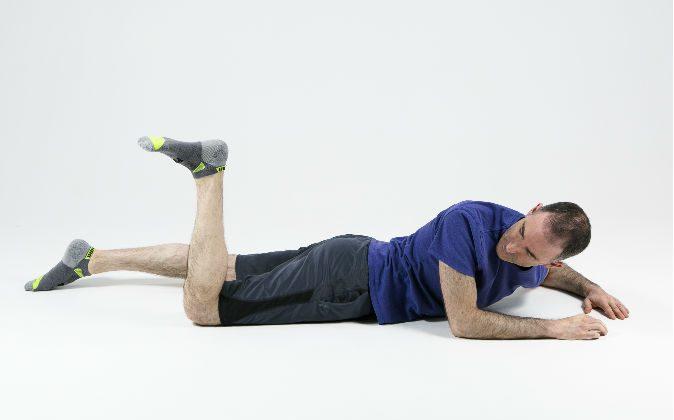We generally think of sitting as a static activity, and recently popular research has highlighted the potential harms of sitting, telling us that it could literally take years off our lives. If this is indeed true, it would be wise to learn to sit in a way that is better for us.
Moshe Feldenkrais considered good posture to be a dynamic action. He defined this dynamism as the ability to move in any direction without hesitation or preparation. Such an understanding evolved from his martial arts background as well as his understanding of physics.
This lesson will look at sitting without support from the back of a chair. In this position, we have four points of contact from which we can establish support: our feet and our sitz bones.
Our sitz bones are the lowest part of the pelvis (their anatomical term is the ischial tuberosities). They should support us when we sit, but often we sit on our sacrum or tailbone.
Most of the time when we sit, we also have a leaning strategy. We lean into the back of our chair, into the armrests, or onto a table in front of us, or we may put our feet under the chair and lean into our toes. These strategies cause stress on our muscles and tendons and ultimately lead to pain. With practice, we can learn to use our skeleton to support ourselves, so we sit without undue wear and tear.
Set aside at least 10 minutes to complete this lesson. Take your time and enjoy the process.
Reaching for the Mouse

1. Sit toward the front of a firm chair with your feet on the ground. Your hips should be a little above your knees but not more than an inch or two. You may place something firm under your feet or pelvis if needed.
2. Imagine you are looking at yourself from the outside. What does your sitting posture look like? Notice your sitz bones. Notice your feet. How is the pressure in your feet? Scan your body for tension. How are you breathing?

3. Place your hands under your pelvis and find your sitz bones (two boney lumps under the flesh of your buttocks). Feel the difference between them. Tilt your torso slightly forward and back and side to side. Observe how the sitz bones move relative to your head.
Tilt in a manner so that the movement comes from the pelvis, and your spine remains lengthened. For example, when you tilt to the right, feel the left sitz bone lift away from the surface. Tilt forward and feel the sitz bones move backward. Remove your hands from underneath you and feel the difference in your awareness of your sitz bones.

4. Tilt yourself in the exact same manner with hands resting on your thighs and notice your feet. How does the pressure change in your feet? Use your left foot to tilt yourself in each direction. For example, press your left foot into the ground to tilt right, and then press in a different way to tilt left, backward, or forward. Now try the right foot.

5. Rest. You may stand and walk around if you need a break from sitting.

6. Sit again at the front of the chair. Slump a little bit into a poor posture. Very slowly raise your arms in front of you to no more than shoulder height. Observe the weight of your arms and the effort in your neck and shoulders.

7. Now slowly tilt forward until you are sitting toward the front of your sitz bones and suspend your head gently by an imaginary string. Try lifting your arms again in a similar manner. Feel the difference in the effort of raising your arms.
Suspending your head in this way allows you to reduce the tension in your neck and move your head in any direction. This would be considered good posture by Feldenkrais. Sitting in a slumped posture reduces this potential.
8. Coordinate the slow lifting of your arms as you tilt forward. Come back and then tilt forward again, varying the timing by either tilting first or raising the arms first. Vary the trajectory of your hands by having them move in a straight line versus an arc. Feel the difference in the back and shoulders.

9. Rest. Observe your breathing.
10. Slowly repeat the tilting and lifting with only the right arm as if you were reaching for a computer mouse. Each time reduce the tilting movement until it becomes imaginary. Let the pelvis and torso move your arm, not the neck and shoulder muscles.

11. Then tilt backward as you reach forward. Tilt right or left so your weight is on one sitz bone as your reach forward. Feel the difference. Repeat in your imagination.
12. Scan your sitting posture and observe the difference from the beginning. Stand for a moment and notice how your feet feel on the floor. How tall do you feel? Walk and observe what else you notice in your body.
Matt Leve is a physical therapist and Guild Certified Feldenkrais Practitioner at Shift Integrative Medicine in Manhattan. He incorporates principles of physical therapy, The Feldenkrais Method®, tai chi, and aikido to help clients achieve optimal performance and self-organization. For questions, email him at [email protected]. For more information, call 212-604-1316.



Friends Read Free